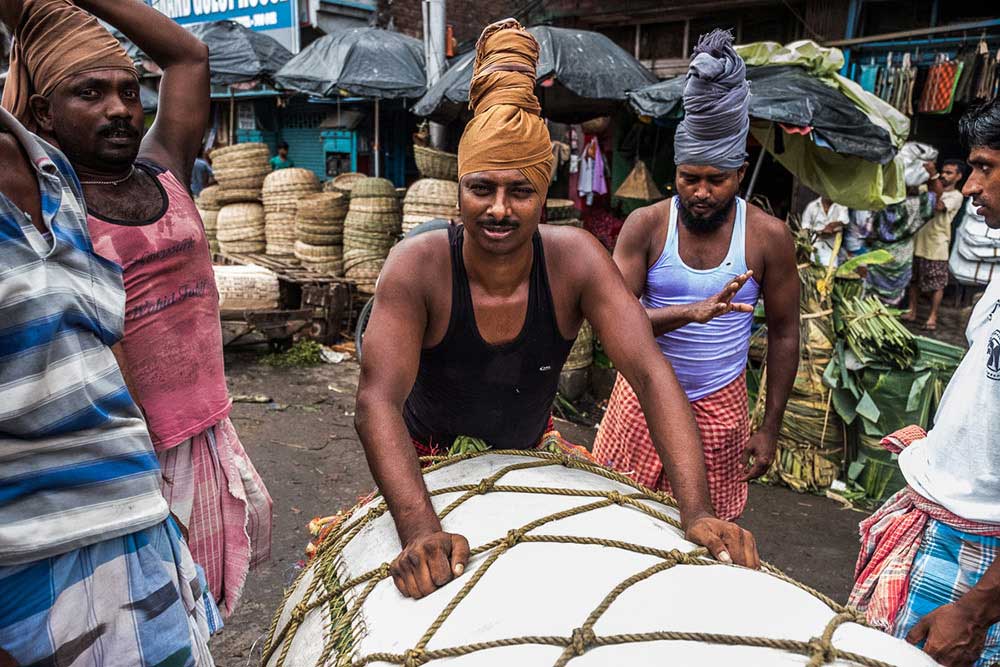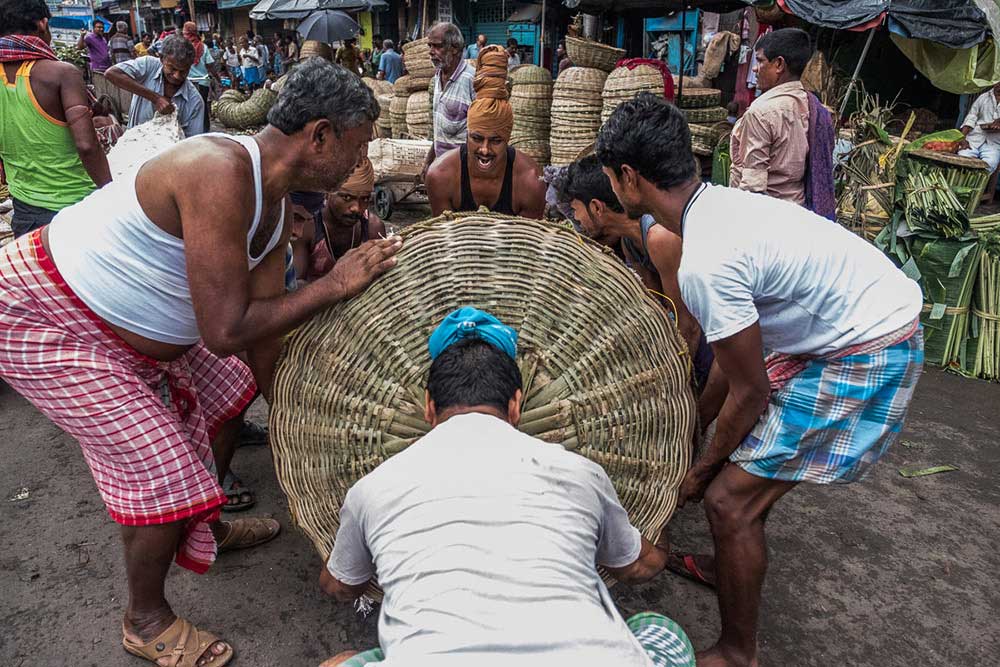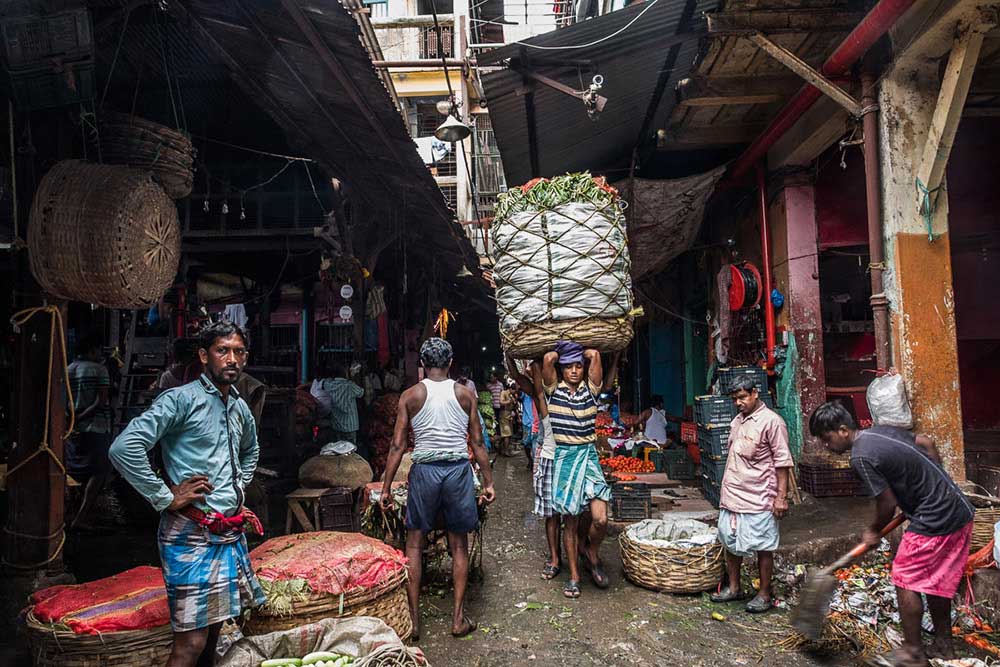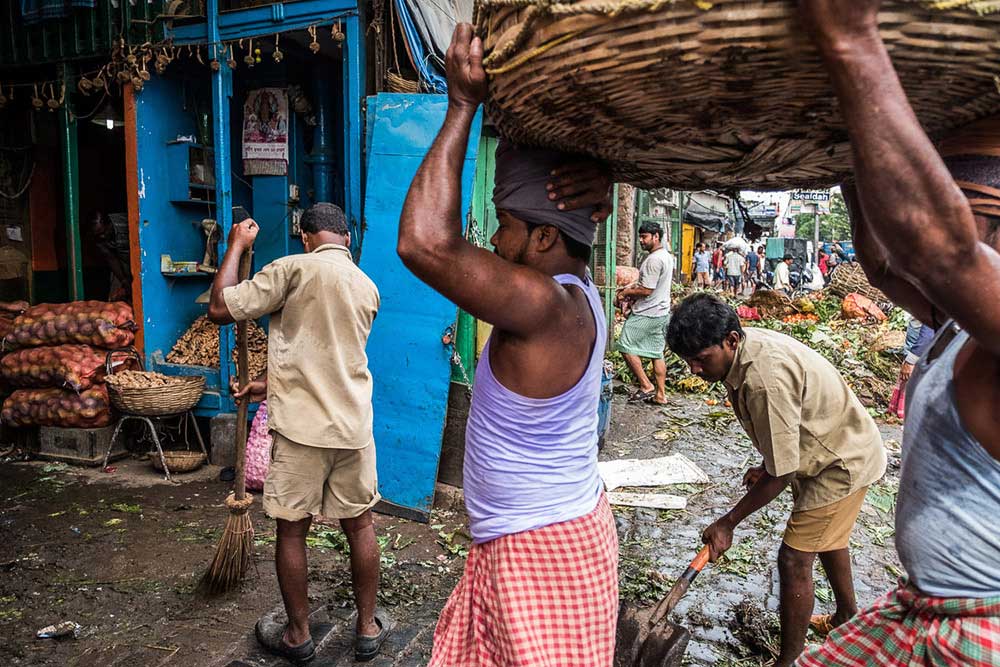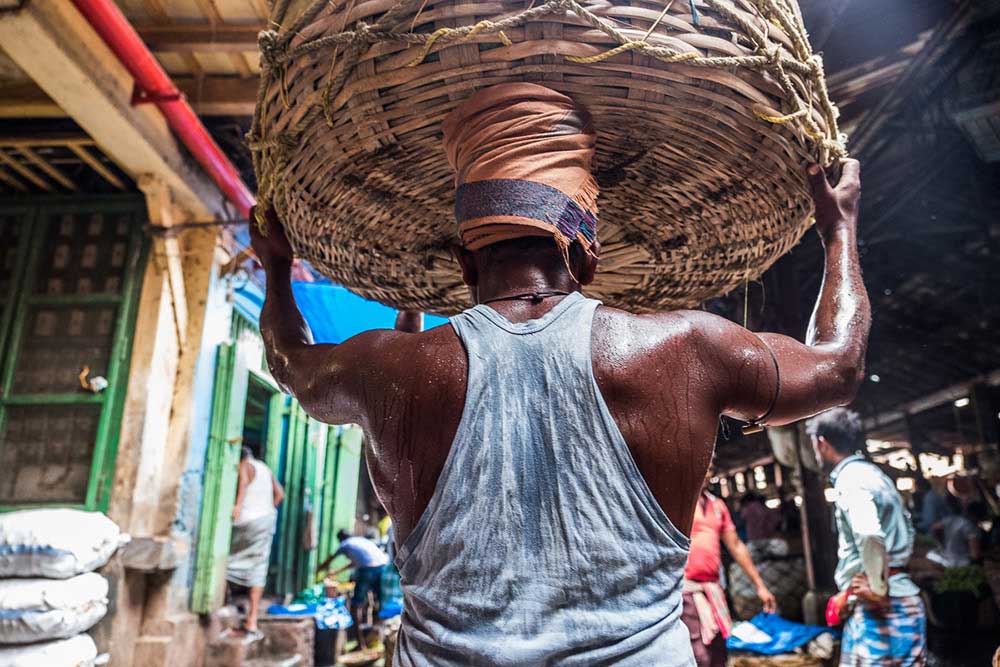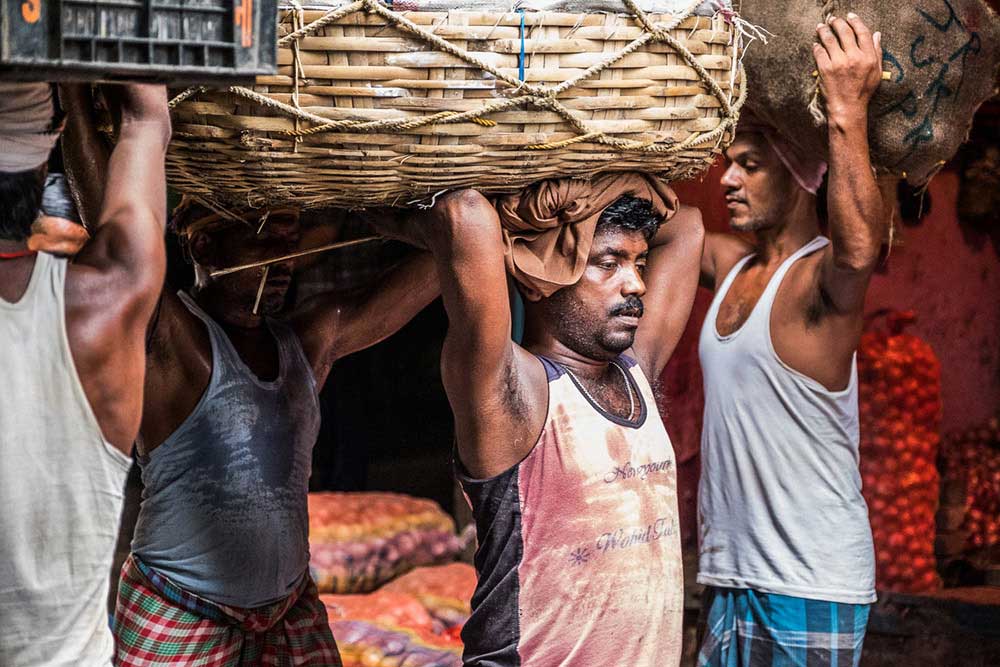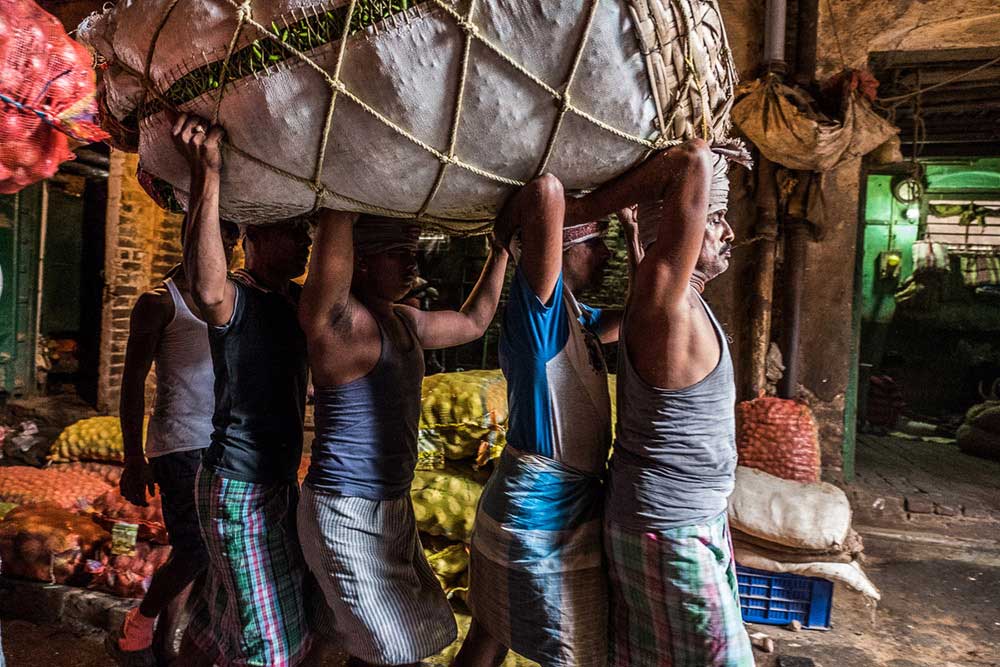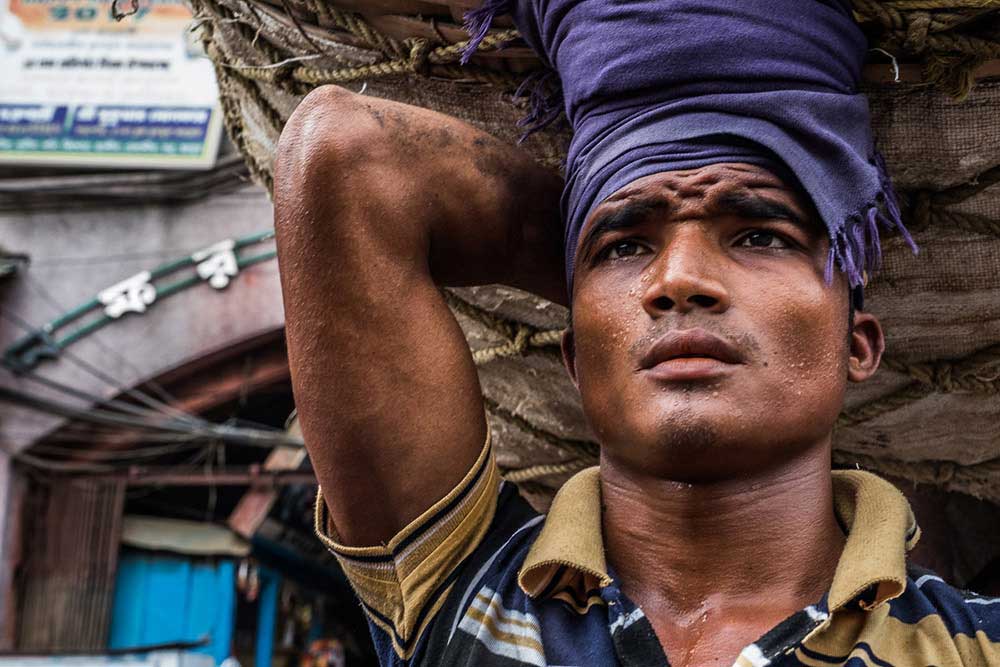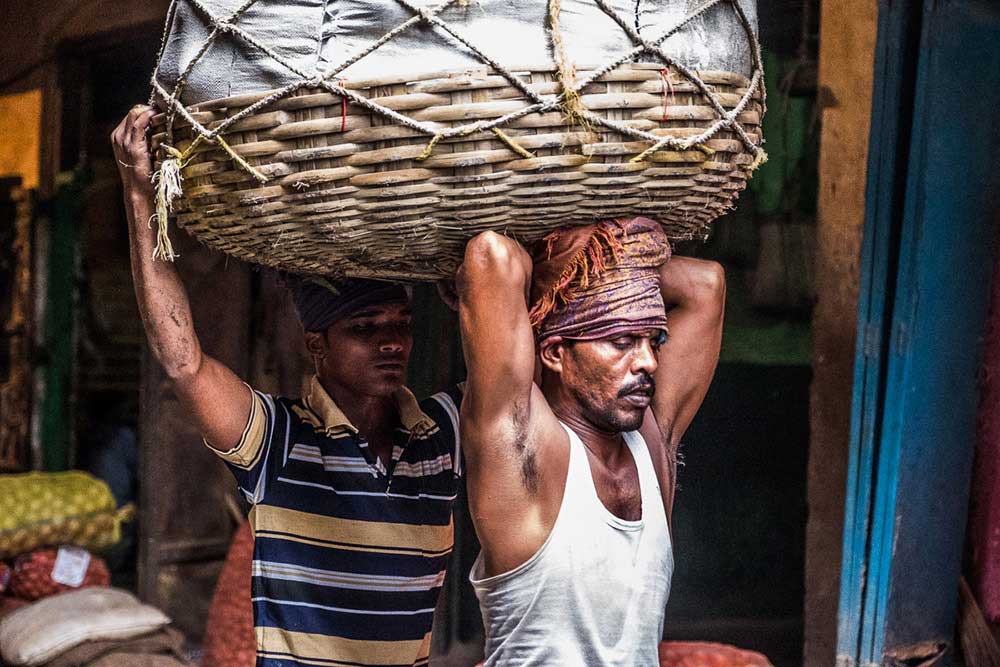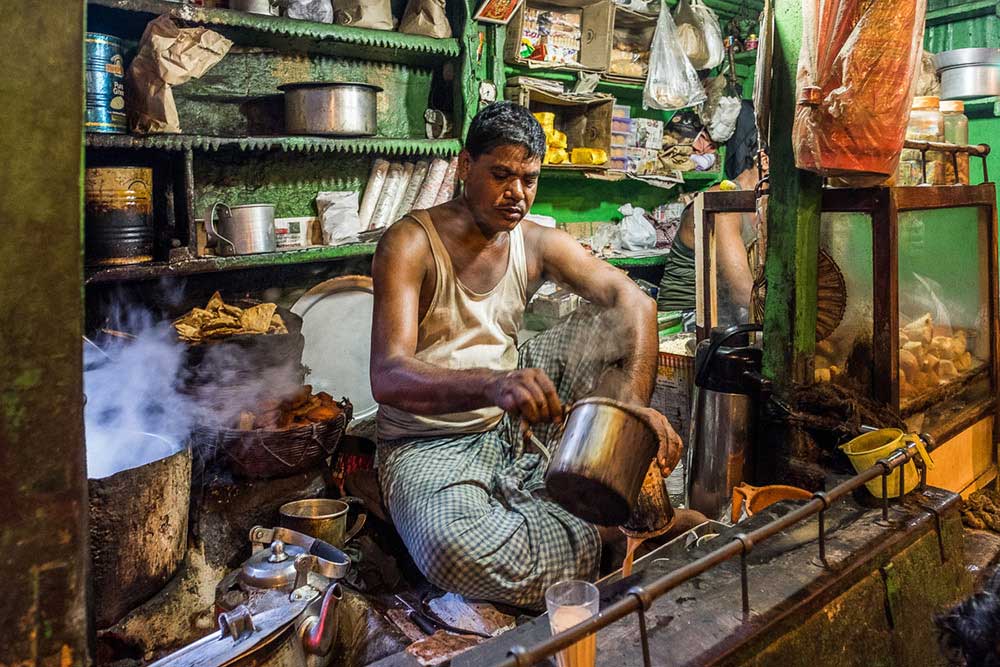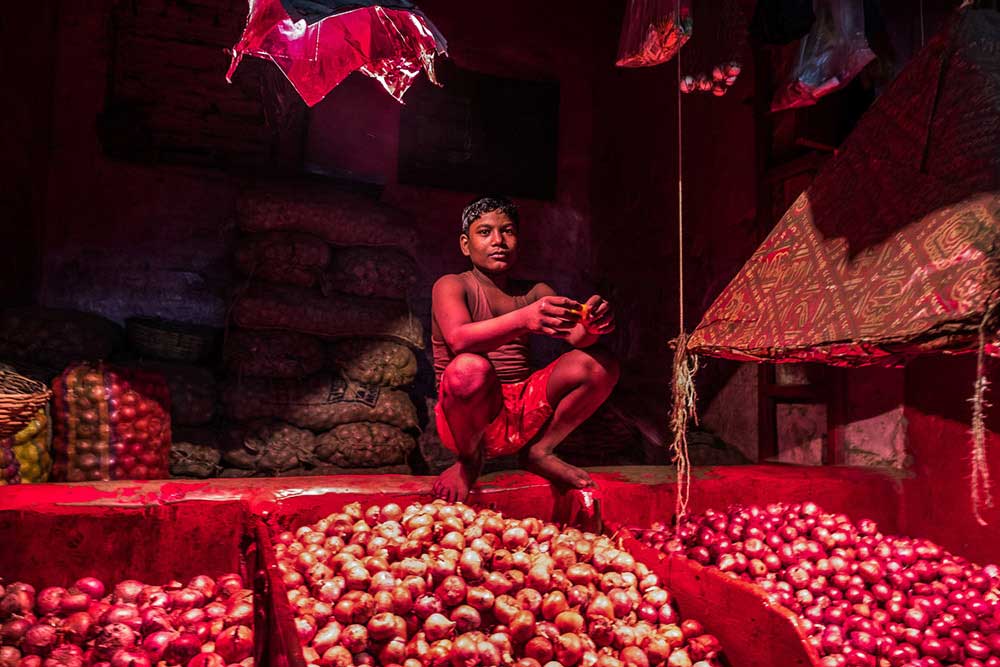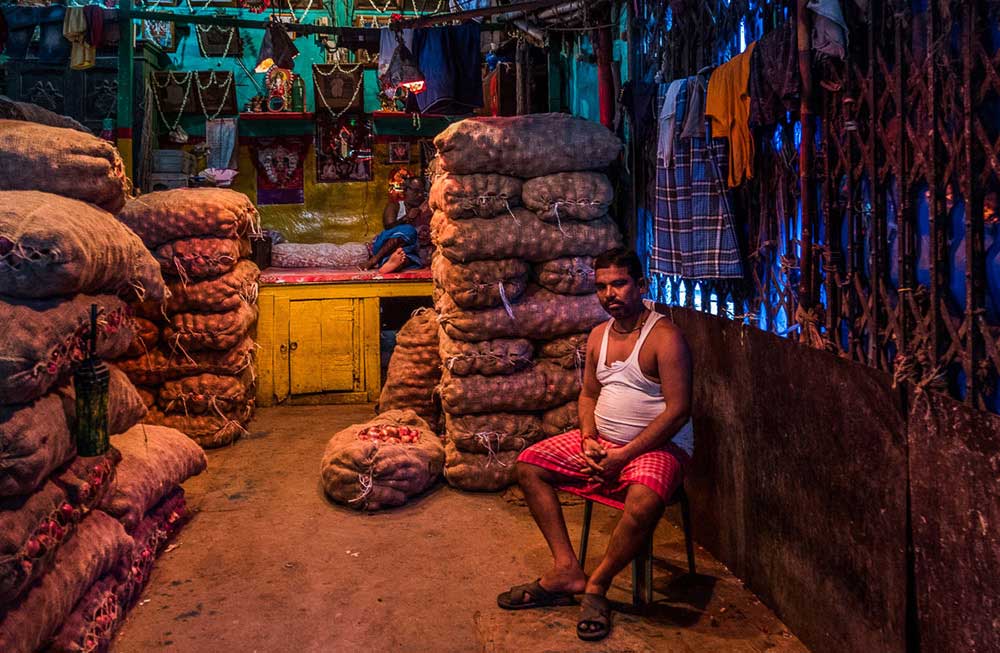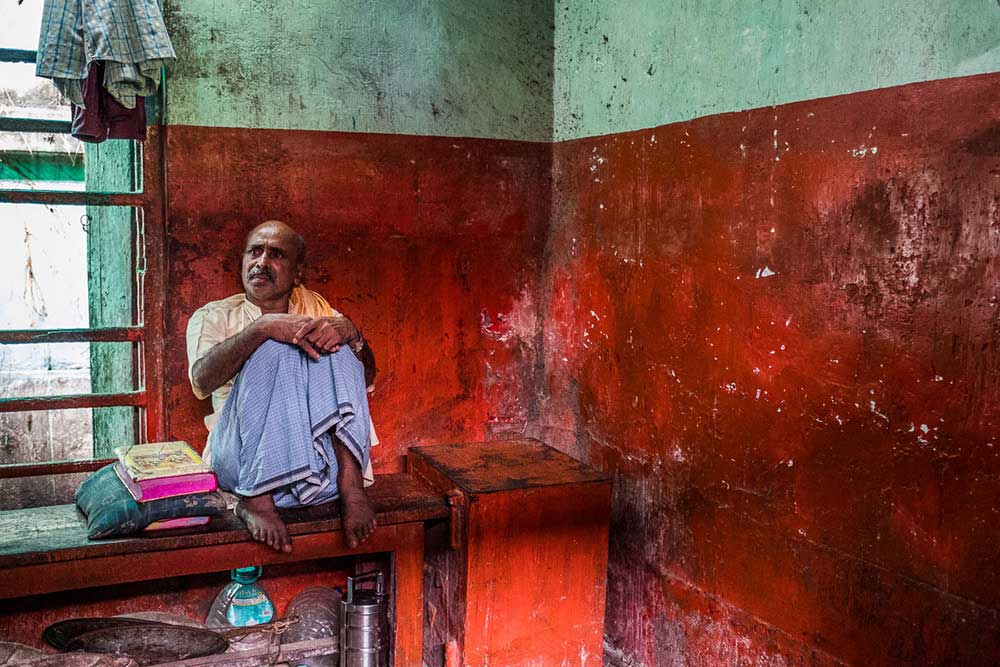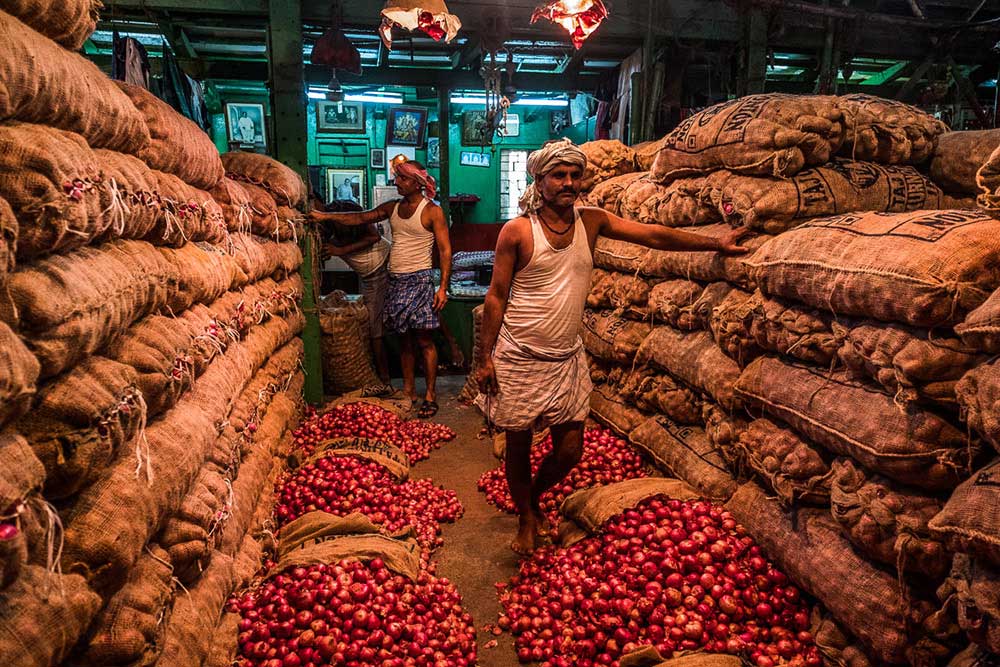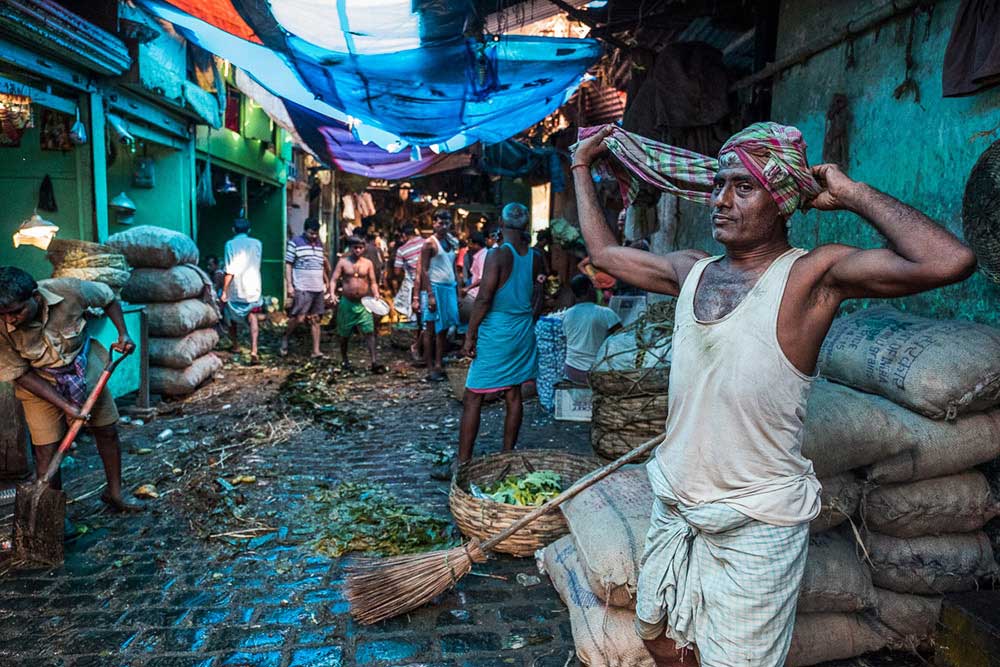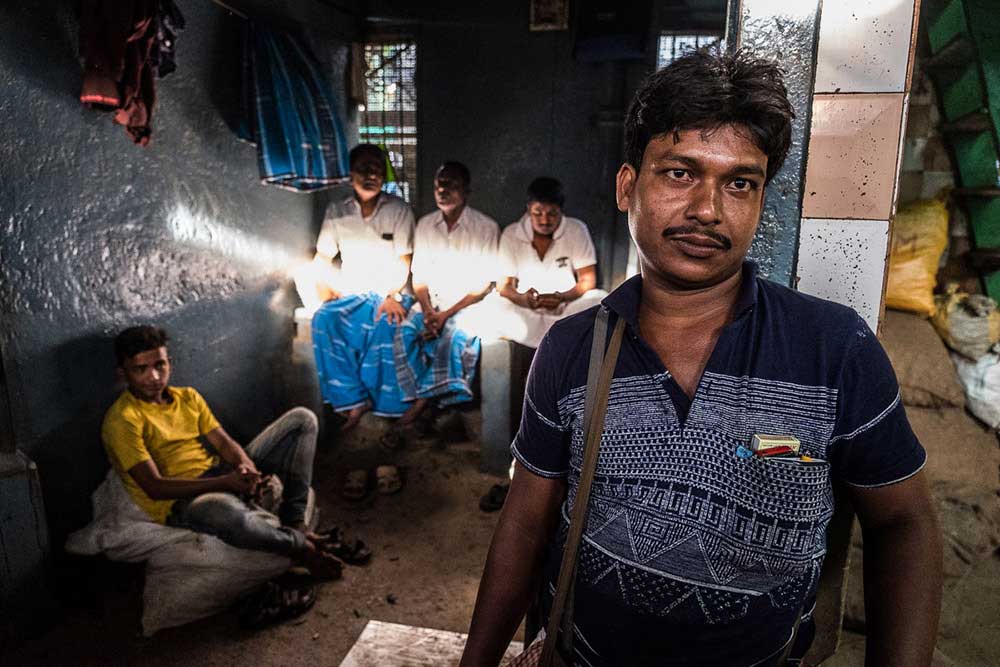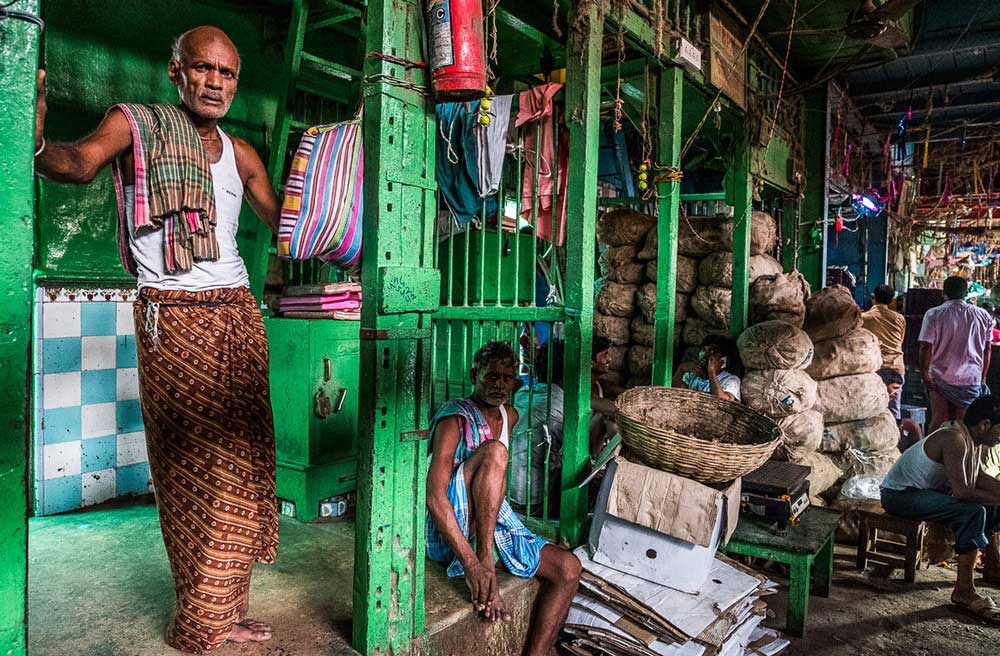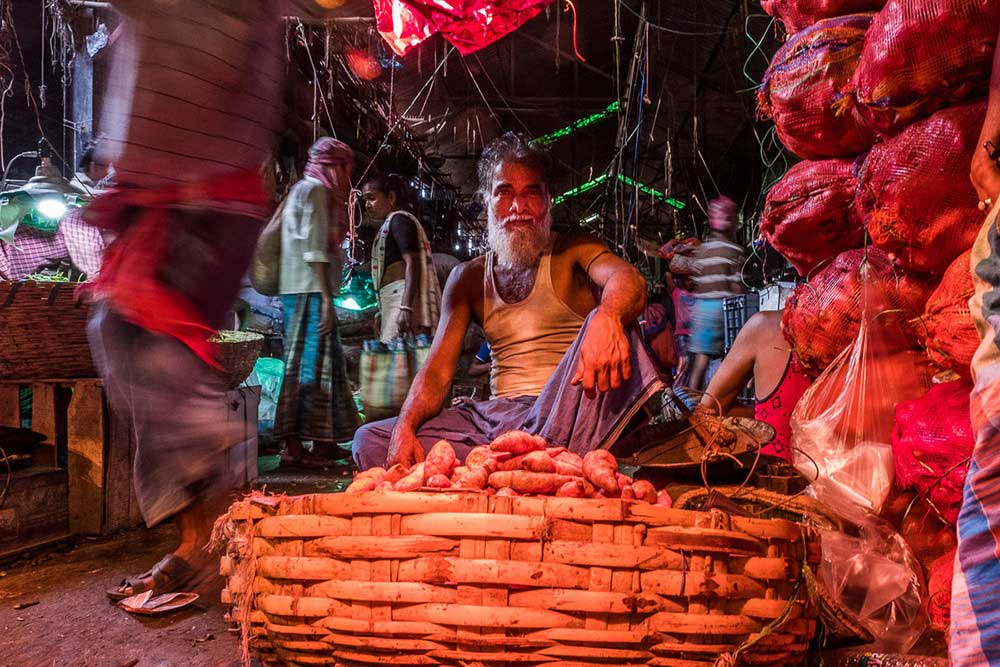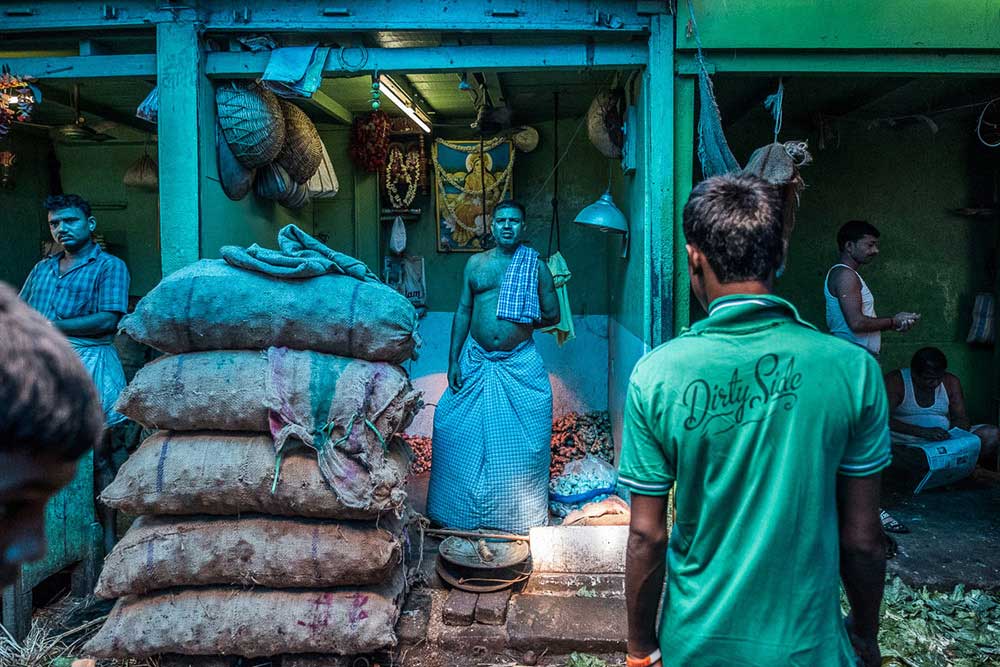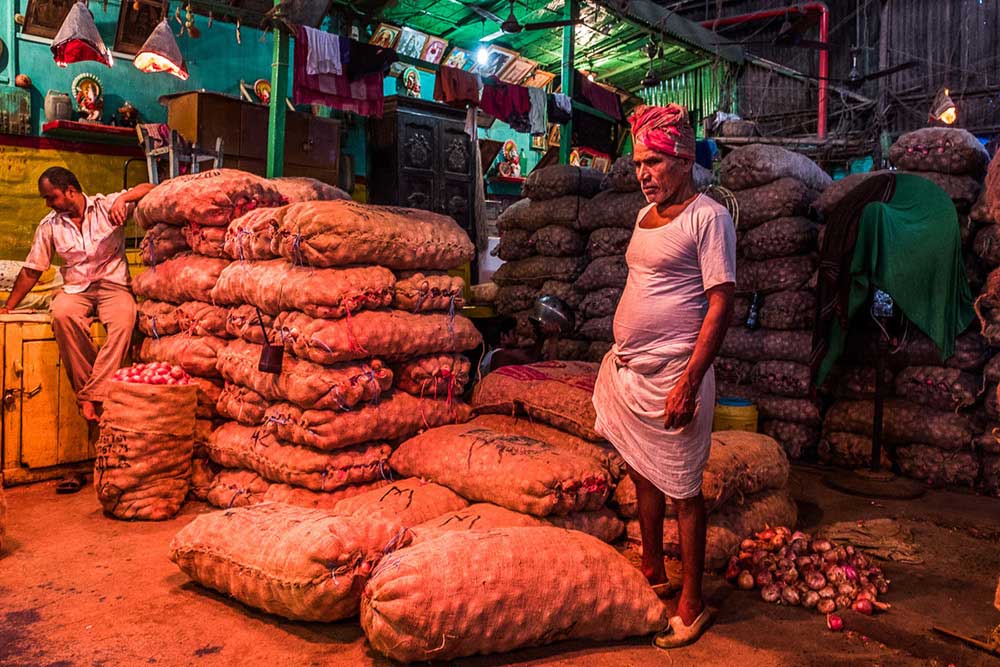For photographers, food markets are always a tempting place to shoot with their bounties of colors, shapes, textures and people.
Over the years, I have visited a large number of food markets in various parts of the world including many in India. But nothing compares to what could be called the “mother of all markets”, the Koley market in Kolkata.
Housed in an old structure near the Sealdah train station, the most important railway terminals in Kolkata, the Koley market is a wholesale vegetable market. One of the most amazing things about it is the kaleidoscope of colors in display. In addition to the array of contrasting shades found on the walls, like everywhere in India, vendors have developed an interesting technique to make their vegetables look more attractive. They cover their lamps with tinted cellophane to make the color of their vegetables more intense and vibrant. So, vendors of carrots are surrounded by red light while the ones who sell cucumbers appear to be green giants. It is eerie, frightening and beautiful all at once.
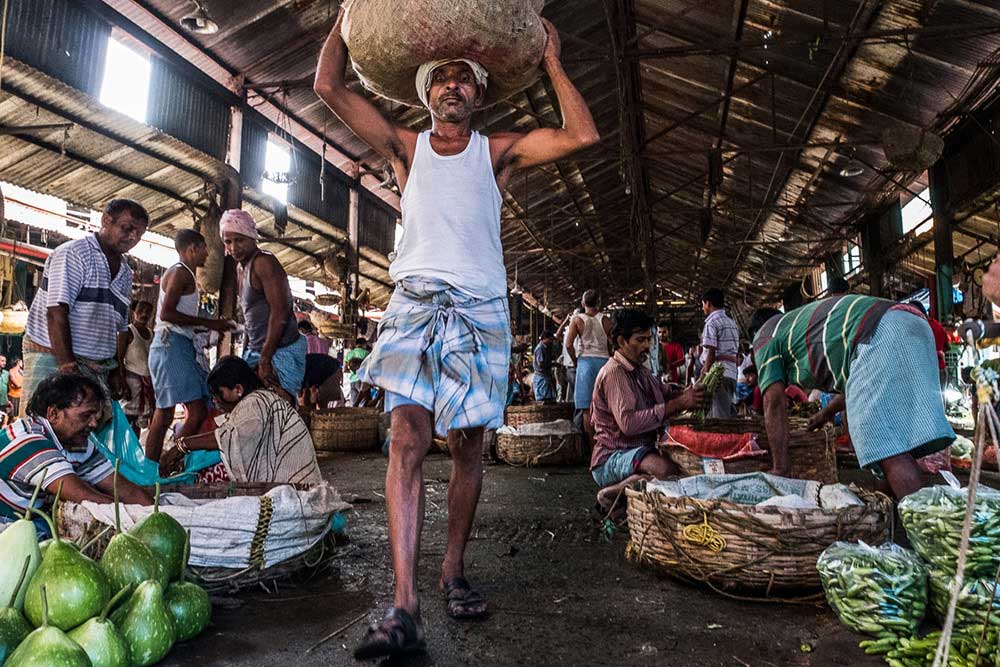
The sheer intensity and scale of the Koley market are overwhelming. It is open 24 hours a day, 7 days a day and buzzing with activities at all times, though the early morning hours seem especially hectic. Trucks come in and are unloaded by porters non-stop, and busy sellers are peddling their fare to oodles of people buying for restaurants, hotels, or their own vegetable stands around the city. The passages are narrow, the floors slippery and porters navigate their treacherous ways back and forth. The old market feels like a city in itself as some vendors and porters, living too far away to commute, have established living quarters in remote (or not so remote) corners of the structure. As a result, one can also find chai wallah, food stalls, barbers, and religious shrines to serve the needs of these full-time residents.
But by far what impressed me the most at the Koley market are the “turban wallah” or heavy load porters. These men are often migrant workers from nearby Bihar or Bangladesh and carry unthinkable loads all day. They wrap a long piece of cloth around their head and then work as a team to lift packages that can weigh up to 500 kg (more than 1000 pounds). These packages are then carried by one, two, three or sometimes four porters walking in unison. Their strength is unbelievable, and they have adopted a way of walking that almost make them look like they are ducks waddling, maybe to add to their stability or because they need to walk very close to one another when they carry the load as a team. For all their hard work, these men of steel earn very little, around $8-$10 per day. I chatted with one of them, Rabi, who at 45 years old had just carried a basket of 120 kg on his own. He kindly gave me a handshake at the end of our chat. I can still feel his grip.
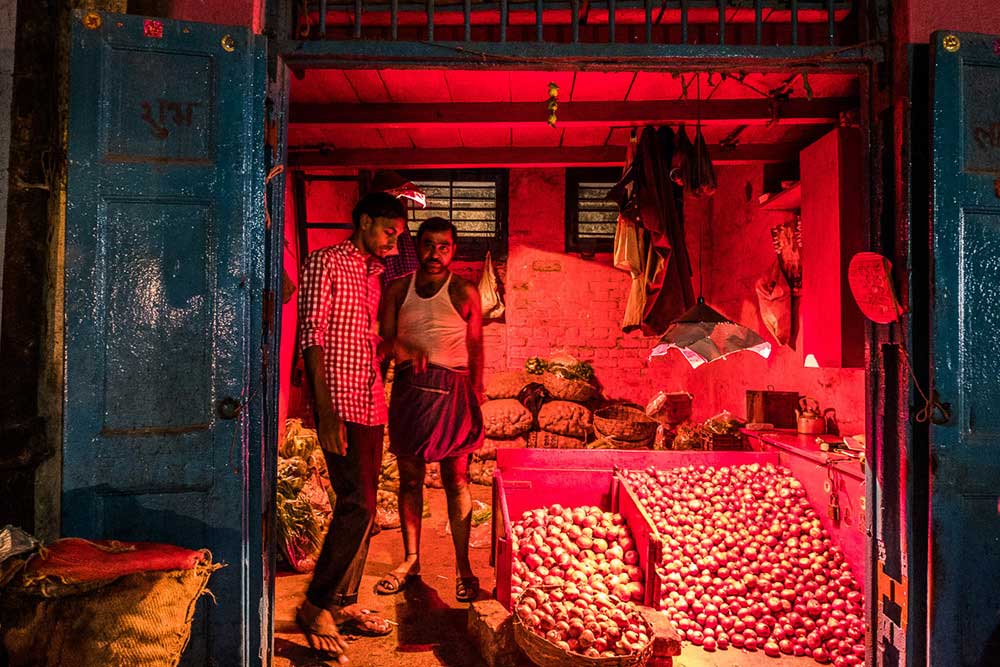
About France Leclerc
France Leclerc, born in Québec, Canada, is an independent photographer who currently lives in Chicago. Her early career was in academia, but in 2005 she decided to make a change to pursue her true passion for documentary photography. But the curiosity and hunger for learning that had motivated her academic research career did not vanish. France now uses photography as vehicle to understand and help depict issues that puzzle her, and satisfy her passion for learning. Among her most prominent themes are culture, religion and poverty. Her images have now been shown in curated exhibitions and have won numerous awards, including an APA award in the photojournalism category and a PDN WorldinFocus award. [Official Website]
